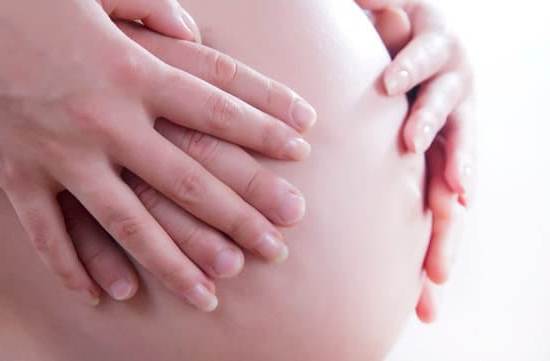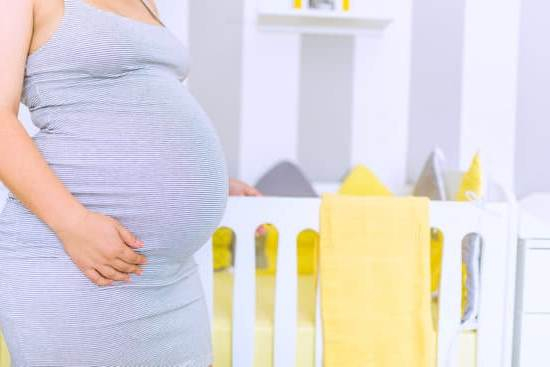Are you curious about what to expect during your dog’s pregnancy? Understanding the signs and changes that occur week by week can help ensure the health and well-being of both the mother and her puppies. In this article, we will explore the physical, behavioral, and nutritional aspects of dog pregnancy, as well as how to care for a pregnant dog and her puppies.
During a dog’s pregnancy, there are various noticeable signs and changes that occur week by week which can indicate the progression of the pregnancy. From early signs of pregnancy in week 1 to preparing for birth in week 5, understanding these changes is crucial for providing proper care and support for the expectant mother.
Pregnancy in dogs typically lasts around 63 days, with each week presenting different developments and challenges. By learning about the stages of dog pregnancy and recognizing the signs that accompany each phase, owners can better prepare themselves for the responsibilities that come with caring for a pregnant dog and her offspring.
Week 1
During Week 1 of a dog’s pregnancy, there may not be any visible physical changes yet, but there are early signs that can indicate that your dog is expecting. One of the earliest signs of dog pregnancy is a change in appetite. Some dogs may experience an increase in appetite, while others may have a decreased interest in food.
Additionally, you may notice that your dog is more tired or lethargic than usual. These subtle changes can be the first indicators that your dog is pregnant.
At this stage, it’s important to consult with your veterinarian to confirm the pregnancy and start planning for the upcoming weeks. The vet may conduct a physical exam or recommend an ultrasound to confirm the pregnancy. This is also a good time to discuss any necessary adjustments to your dog’s diet and exercise routine.
It’s crucial to monitor your dog closely during Week 1 for any unusual symptoms. Keep an eye out for vomiting, excessive thirst, or any other behaviors that seem out of the ordinary. Understanding these early signs of dog pregnancy can help you provide the best care for your expectant pet as she progresses through this special time.
| Signs of Dog Pregnancy at Week 1 | Indicators |
|---|---|
| Change in Appetite | Increase or decrease in food intake |
| Fatigue | Lethargy or increased sleepiness |
| Veterinary Consultation | Confirmation and initial planning with a vet |
Week 2
During week 2 of your dog’s pregnancy, you may start to notice some physical changes in your furry friend. These changes are not always obvious and may vary from dog to dog, but it’s essential to pay attention to them in order to ensure the well-being of both the mother and her puppies. Here are some physical signs that may indicate your dog is pregnant:
- Enlarged nipples: One of the earliest physical signs of pregnancy in dogs is the enlargement of the nipples. They become more prominent and may change in color as well.
- Weight gain: As the pregnancy progresses, a pregnant dog will start to gain weight. This can be gradual at first, but by week 2, you may notice a slight increase in her body size.
- Change in appetite: Some dogs may experience a change in their appetite during week 2 of pregnancy. This can either mean an increase or decrease in food intake.
It’s important to remember that these physical changes are not definitive proof of pregnancy and should be confirmed by a veterinarian. Your vet can perform an ultrasound or blood test to confirm whether your dog is indeed pregnant.
As the owner, it is crucial to provide extra care and attention to your pregnant dog during this time. Ensure she has a comfortable and warm space to rest and monitor her physical changes closely.
In addition to these signs, make sure your pet gets regular veterinary check-ups throughout her pregnancy. This will help you keep track of any potential issues or complications that may arise as the weeks progress. Keep a close eye on these physical changes, as they can give valuable clues about your dog’s health status during this crucial period.
Week 3
During week 3 of a dog’s pregnancy, behavioral changes become more noticeable as the pregnancy progresses. It is important for dog owners to be aware of these changes in order to provide proper care and support for their pregnant pet. Understanding the behavioral signs of a pregnant dog can help owners ensure the well-being of their pet and her developing puppies.
Increased Restlessness
As a pregnant dog enters week 3 of her pregnancy, she may exhibit increased restlessness. This can be due to discomfort from physical changes as well as anxiety about the upcoming birth. It is important for owners to provide a comfortable and safe space for their pregnant dog during this time, offering plenty of opportunities for rest and relaxation.
Changes in Appetite
Another common behavioral change during week 3 of a dog’s pregnancy is fluctuations in appetite. Some dogs may experience an increase in hunger, while others may show a decreased interest in food. It is crucial for owners to monitor their pet’s eating habits and consult with a veterinarian regarding any concerns about nutrition during this stage of pregnancy.
Protective Behavior
Pregnant dogs may also display protective behavior during week 3 as their maternal instincts begin to kick in. This can manifest as the dog becoming more possessive over her sleeping area or displaying increased vigilance towards other pets or humans in the household. Owners should be mindful of these behaviors and ensure that their pregnant dog feels secure and supported throughout her pregnancy journey.
Understanding these behavioral changes during week 3 of a dog’s pregnancy is essential for providing appropriate care and monitoring the well-being of both the expectant mother and her developing puppies. By being attentive to these signs, owners can ensure that their pregnant dog receives the support and comfort she needs during this crucial stage of her pregnancy journey.
Week 4
During week 4 of a dog’s pregnancy, it is important to pay close attention to the nutritional needs of the expectant mother. As the pregnancy progresses, the developing puppies will start to place greater demands on the mother’s body, requiring an increase in nutrients to support their growth and development. It is crucial to provide the right balance of nutrients to ensure the health of both the mother and her growing litter.
Importance of Proper Nutrition
Proper nutrition during dog pregnancy is essential for supporting the overall health and well-being of the mother and her developing puppies. The expectant mother will need a higher intake of quality protein, vitamins, and minerals to meet her increased energy needs and support optimal fetal development. Inadequate nutrition can lead to issues such as low birth weight in puppies or even complications during labor. Consulting with a veterinarian about dietary adjustments is crucial during this time.
Dietary Recommendations for Pregnant Dogs
To meet the increased nutritional requirements during week 4 and throughout the rest of the pregnancy, it is advisable to switch to a high-quality, balanced diet specifically formulated for pregnant or nursing dogs. These diets are designed to provide essential nutrients, including calcium, phosphorus, and essential fatty acids. It is also important to adjust portion sizes as needed based on the dog’s individual needs and body condition.
Additionally, providing access to clean water at all times is vital for both hydration and nutrient absorption. By paying close attention to a pregnant dog’s nutritional needs during week 4 and beyond, owners can help ensure a healthy pregnancy and successful delivery for their pet.
Week 5
During week five of a dog’s pregnancy, nesting behavior becomes more evident as she begins to prepare for the birth of her puppies. This is an important time for pet owners to provide the necessary support and resources to ensure the comfort and well-being of their pregnant dog. Here are some key aspects to consider during this stage:
- Nesting: As the due date approaches, a pregnant dog will begin showing signs of nesting behavior by seeking out a comfortable and secluded space to create a den for her upcoming litter. This may involve scratching or digging at blankets, towels, or other soft materials to create a cozy space.
- Providing Comfort: Owners should ensure the pregnant dog has access to suitable nesting materials such as old blankets, towels, or special bedding designed for whelping. It is important to create a quiet and calm environment in the designated nesting area to minimize stress for the mother-to-be.
- Preparing for Birth: At this stage, it is crucial for pet owners to have a whelping box set up in advance. The whelping box should be large enough to accommodate the mother and her puppies comfortably while also providing easy access for monitoring and assisting with the birth.
Additionally, it’s essential to have necessary supplies on hand such as clean towels, heating pads (or heat lamps), and emergency contact information for a veterinarian specializing in canine reproduction.
Proper preparation during week five can help ensure a smooth transition into labor and delivery when the time comes. By understanding and meeting the nesting needs of a pregnant dog, pet owners can play an active role in supporting their canine companion throughout this critical stage of her pregnancy journey. Remember that every dog’s pregnancy experience may vary so it’s important to be observant of any changes in behavior or overall well-being during this time.
By being attentive to your dog’s condition each week, you’ll be better equipped at understanding what they’re going through as they approach childbirth so they can get through it as smoothly as possible.
Week 6
During week 6 of a dog’s pregnancy, the signs of labor might start becoming more evident. It is crucial for dog owners to be vigilant and observant during this time to ensure the health and safety of both the mother and her puppies.
One of the most notable signs that labor is approaching is when the pregnant dog begins to display nesting behavior. This can include tearing up bedding or searching for a secluded and comfortable spot to give birth.
Additionally, in week 6, pregnant dogs may also begin to show a decrease in appetite as they prepare for labor. It’s important for dog owners to continue providing nutritional support during this time, offering small meals at regular intervals to keep the mother nourished without overloading her system. Another sign that labor is impending is when the dog’s body temperature drops from its normal range of 101 to 102.5 degrees Fahrenheit down to about 99 degrees Fahrenheit.
As the due date approaches, it’s essential for dog owners to make sure that they are prepared with supplies for the whelping process, such as clean towels, blankets, and a whelping box. Being aware of these signs can help owners provide proper care and support during this crucial stage of a dog’s pregnancy.
| Signs of Labor | Week 6 |
|---|---|
| Nesting Behavior | Becomes more evident |
| Decrease in Appetite | Notable change in eating habits |
| Drop in Body Temperature | From 101-102.5°F down to about 99°F |
Week 7
During Week 7 of a dog’s pregnancy, it is crucial to start preparing for the birth of the puppies and ensuring the mother’s health and well-being. As the due date approaches, it is essential to create a comfortable and safe space for the mother to give birth and care for her puppies.
This includes setting up a whelping box in a quiet, warm, and draft-free area of the home. The box should be large enough for the mother to move around comfortably but also provide a sense of security for her and her puppies.
Another important aspect of caring for a pregnant dog during Week 7 is monitoring her closely for any signs of labor. It is common for pregnant dogs to begin displaying nesting behavior during this week, as they instinctively prepare their whelping area. Some signs that labor may be imminent include restlessness, pacing, panting, and seeking seclusion. It is vital to pay attention to these signs and be prepared to provide assistance if necessary.
In addition to physical preparations, it is equally important to support the pregnant dog’s nutritional needs during Week 7. At this stage, the mother’s energy requirements increase as she nears parturition.
Providing high-quality puppy food and supplementing with additional nutrients like calcium can help ensure that she receives the necessary nutrition for herself and her developing puppies. By focusing on these essential aspects of care during Week 7, pet owners can help support their pregnant dog through the final stages of pregnancy and prepare for the arrival of her puppies.
Conclusion
In conclusion, it is crucial for dog owners to understand the significance of monitoring their pet’s pregnancy signs week by week. Throughout the nine-week gestation period, there are a number of physical and behavioral changes that occur in a pregnant dog, which can provide valuable insight into the health and well-being of both the mother and her developing puppies.
By recognizing and addressing these signs early on, owners can ensure that their dog receives appropriate care and support throughout her pregnancy.
From the early signs of dog pregnancy in week 1 to the nesting behavior in week 5 and the signs of labor in week 6, each stage offers unique challenges and opportunities for intervention. By staying informed about these developments, owners can be better prepared to provide their pregnant dog with the necessary nutritional support, veterinary care, and comfortable environment as she prepares for birth.
Additionally, being aware of potential complications or unusual symptoms at different stages can help owners seek prompt medical attention if needed.
Ultimately, understanding and monitoring dog pregnancy signs week by week is not only essential for ensuring a safe and healthy pregnancy for the mother but also for promoting the well-being of her puppies. By staying attuned to the physical and behavioral changes occurring during each stage of canine gestation, owners can take proactive measures to support their pet’s reproductive health and nurture a successful transition into motherhood.
Whether it’s providing extra care during labor or managing postnatal care for both mom and pups, being knowledgeable about dog pregnancy signs can make all the difference in promoting a positive outcome for everyone involved.
Frequently Asked Questions
What Week Will I Notice My Dog Is Pregnant?
The signs of pregnancy in dogs can start to become noticeable around the 3rd or 4th week after mating. Some common indicators include changes in behavior, appetite, and physical appearance.
How Soon Can You Tell if a Dog Is Pregnant After Mating?
It is possible to detect pregnancy in dogs as early as 20-22 days after mating using ultrasound or hormone testing. However, physical signs of pregnancy may not be obvious until a few weeks later.
What Does a 2 Week Pregnant Dog Look Like?
At 2 weeks pregnant, a dog might not display any noticeable physical changes yet. Internally, the embryos are developing, but externally there may not be any visible signs of pregnancy. It’s important to monitor for behavioral and appetite changes at this stage.

Welcome to my fertility blog. This is a space where I will be sharing my experiences as I navigate through the world of fertility treatments, as well as provide information and resources about fertility and pregnancy.





